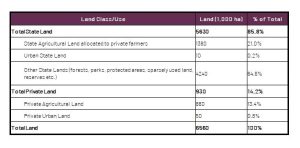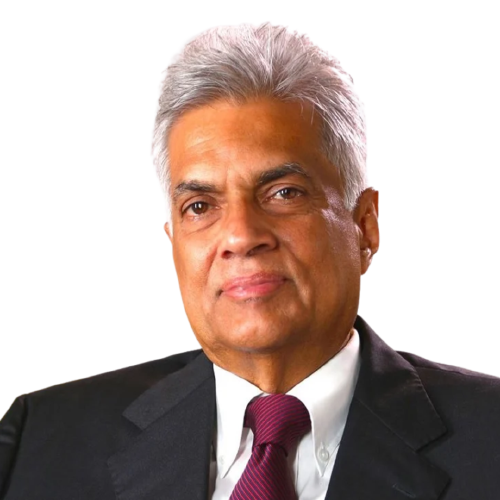Fact Check
In his statement, the president makes two claims—(i) the government owns approximately 80% of all land, and (ii) the government is able to allocate land for investment purposes. To check these claims, FactCheck.lk consulted reports from the World Bank (WB) and the UN-REDD programme.
Claim (i): 2001 WB data places the extent of government owned land at 85.8%. A 2016 report by the UN-REDD programme, citing data from Sri Lanka’s Land Use Policy Planning Department, places the extent of government owned land at 82.25%. Therefore, claim (i) is correct, as the ownership of land attributed to the state in the available data, is at least 80%.
Claim (ii): State-owned land is distributed among several organisations and used for several purposes. These include but are not limited to: (i) land leased to private farmers and plantation companies, primarily through the Sri Lanka State Plantation Corporation and the Janata Estate Development Board; (ii) Forests, parks, protected areas and reserves; (iii) Urban state land.
The most recent data on land use available to FactCheck.lk was from the WB in 2001. Even in 2001, 21% of total land was leased by the state for usage by private farmers. The UN-REDD report indicates additionally that in 2010, 30.2% of total land was state-owned forests. Neither land that has been leased nor forest land can be easily allocated for investment. Therefore, this data suggests that even without accounting for protected areas and reserves, the government cannot easily and immediately provide access to more than 31% of land. However, the president does not specify the percentage of state land that may be allocated for investment. As the government is still able to provide access to land for investment, though not the full 80%, the implication of claim (ii) remains correct.
Therefore, we classify his statement as TRUE.
*FactCheck.lk’s verdict is based on the most recent information that is publicly accessible. As with every fact check, if new information becomes available, FactCheck.lk will revisit the assessment.
Exhibit 1: Land ownership and usage (WB, 2001)
 Source: World Bank 2001
Source: World Bank 2001
Sources
Land Tenure Considerations in Sri Lanka’s Proposed National REDD+ Strategy, UNREDD, available at:
https://www.un-redd.org/document-library/land-tenure-considerations-sri-lankas-proposed-national-redd-strategy [last accessed: 27 October 2022]
Improving quality of land administration in Sri Lanka (English). Washington, D.C. : World Bank Group, available at: http://documents.worldbank.org/curated/en/750021530107195459/Improving-quality-of-land-administration-in-Sri-Lanka [last accessed: 27 October 2022]


